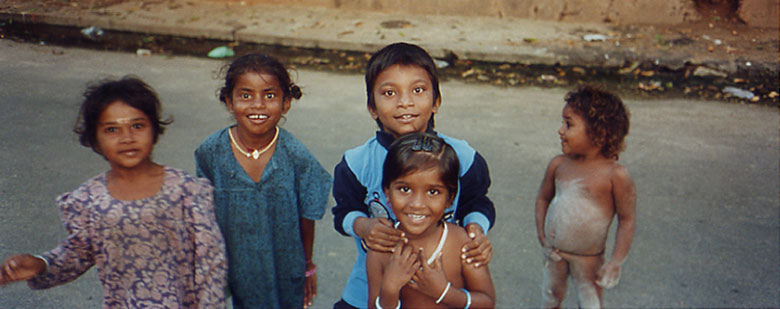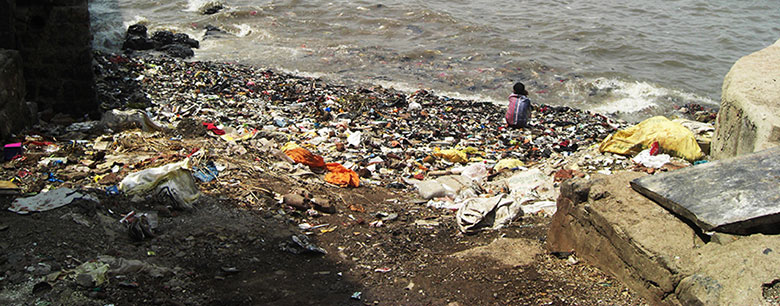 ARTICLE TEXT BY DAWN LINTERN; PHOTOGRAPHY BY CHRISTIAN RULAND
ARTICLE TEXT BY DAWN LINTERN; PHOTOGRAPHY BY CHRISTIAN RULAND
Over 500 destitute children are cared for by Scottish Love in Action (SLA), who fund the Light of Love Children’s Home and School in Tuni, India. Most of these children have lost at least one parent. Some have physical disabilities or a parent with a disability or AIDS; some are Dalits, or untouchables. The children are fed, clothed, housed, educated and given medical care, and SLA’s ultimate purpose is to enable them to lead independent, poverty-free lives.
In association with SLA, Everything is New is an international outreach project run by Transgressive North, an Edinburgh-based arts collective. The project has culminated in a film and two epic albums of music featuring recordings of the voices of every one of these children. The aim of the project is to raise funds and awareness, as well as to instigate an empowering experience for the children involved.
Marram Ft. Owen Pallett – “With Us Instead” Music Video
The Film: Everything Is New
Jamie Chambers, the Co-Director of Trangressive North, describes how the Everything Is New project was creatively inspired by music and film, both valued cultural forms within Indian society. The organization wanted these children to experience what it is to be at the heart of creating joyous and celebratory new music and “to see themselves as the heroes and stars of an exciting, colourful movie on the big screen.”
A red carpet premiere for the Everything is New film was organised at one of the local cinemas in Tuni. All 500 of the children saw themselves on the big screen. The elation and pride felt by the children was palpable and both humbling and gratifying for all those involved.
The Music: Marram’s Sun Choir And BOATS
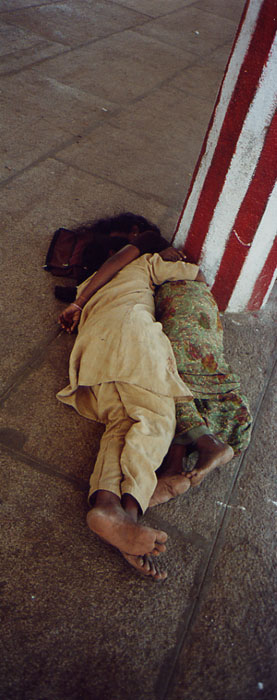 The project’s accompanying albums, Marram’s Sun Choir and BOATS, feature many international and noteworthy musicians. Many of the tracks on these albums share an epic quality, with sonic ranges and depths sometimes verging on chaos, yet often tempered by the raw quality of the recordings of the children’s voices. There are meditative interludes with looped samples, used to ambient effect, combined with the influence of the children’s instinctive chanting, which is a sound deeply entrenched within their everyday culture. Anyone who’s been to India will have experienced a similar saturation of the senses.
The project’s accompanying albums, Marram’s Sun Choir and BOATS, feature many international and noteworthy musicians. Many of the tracks on these albums share an epic quality, with sonic ranges and depths sometimes verging on chaos, yet often tempered by the raw quality of the recordings of the children’s voices. There are meditative interludes with looped samples, used to ambient effect, combined with the influence of the children’s instinctive chanting, which is a sound deeply entrenched within their everyday culture. Anyone who’s been to India will have experienced a similar saturation of the senses.
Most of the musicians involved worked remotely using samples of the children’s voices, but all took a different approach. American rapper and producer Doseone wanted to create the feeling of a mutual and fun exchange with the children, as if they were in the room together. The result is a rap-like song, which seems almost like a dialogue between him and the children.
Greg Saunier, best known as the drummer of Deerhoof, endeavored to embrace the gulf between the two cultures and languages with a formalist piece of music that eschewed linguistics and focused instead on the sonic poetics of the sampled recordings of the children’s voices.
Tim Rutili from Califone was deeply affected by the children’s voices, which he describes as “beautiful and haunted”. In response to images of “smallness” and “innocence” that the children’s voices conjured up for him, Rutili created a song to affirm their solidarity and strength. The result, “Those Mountains are God’s Teeth”, merges Rutili’s distinctively American drawl and delicate twangs of guitar, with the soaring, almost unearthly ringing of the children’s choir. Echo and reverb swathe the voices atop an ambient synth backdrop, heightening the track’s mystical and epic qualities.
Rutili talks of the capacity for music to induce “momentary unity”, which in turn may plant the seeds of opening up the consciousness. The experience of working with the children’s voices has since inspired him to want to work on further charitable projects.
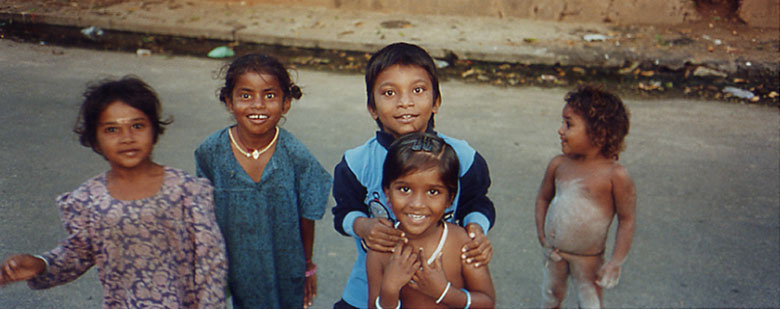
Marram’s Sun Choir
Sun Choir is a full-length album written for and featuring the children of the Light of Love Children’s Home by Edinburgh based art-pop collective, MARRAM. It features contributions from Jarvis Cocker, doseone, Owen Pallett, White Hinterland, and Scottish folk singer Margaret Bennett, alongside specially composed lyrics by Scottish writers and poets.
The ‘Sagrada Familia’ of post-rave art pop, Sun Choir is an explosive and maximalist mesh of choirs, orchestras and drums featuring more than 1000 voices, musicians, and singers from around the world.
BOATS
BOATS is a 29-track compilation album of exclusive new tracks created by celebrated international artists. Each individual act used samples of the Light of Love Children’s Choir, recorded for Marram’s Sun Choir, to create a new song. As a result, BOATS is a diverse and kaleidoscopic concept-album with the children’s voices at its core.
Conceived and produced by Transgressive North, BOATS features new tracks from Bear In Heaven, Califone, Capybara, Dan Deacon, Deerhoof, Doseone, Four Tet, Gang Gang Dance, YACHT, and more.
An Organically Growing Process
Jamie Chambers, musician and Co-Director of Transgressive North, found himself working in an increasingly responsive way with the children as he became more and more acquainted with their personalities and voices.
“I would spend almost every day recording with the children, and in the evenings, would edit the recordings and put them into place in the songs,” he explains. “This process, and having so much quality time with the kids, gave me a lot of scope to respond to what I was hearing, and to try and increasingly tailor what I was writing to what the kids seemed to respond to.”
The merging of the east and the west, with all its complexities, is embodied within these two albums of music. What shines through is the fragility and open-heartedness found in the children’s voices. Underprivileged children in India love to have their photograph taken, even if they just see it for a split second on the screen of a traveller’s camera. It seems to be an acknowledgement of their being and their worth — and knowing this, it seems impossible not to picture their huge smiles and sense the immense joy they must have felt from being filmed and recorded.
The Everything Is New project has not only raised global awareness and funds, but has also served to acknowledge the existence of these children and their value as human beings.
Chambers describes a particularly poignant experience whilst working with one child in particular, saying, “I would make a habit of letting the kids hear something resembling the finished assembly. I remember, in particular, when I played them their voices on the second verse, singing alongside Jarvis Cocker on ‘What if We’…”
He remembers some accomplished singers amongst the children, including a “wonderful but very shy girl” named Nagalaxmi. “When I put all the pieces together, it just sounded incredible,” recalls Chambers “I remember Nagalaxmi’s face so clearly, her jaw dropped and she clasped both the headphones to her ears so she could hear it as loud as possible. Then she turned to me, and said, ‘Is this me?’ when I told her it was, she just shook her head, asked to listen to it again, and again, and again the next day.”
The completion of the project was marked by a huge listening and dancing party in Tuni on New Year’s Eve, with a huge PA system ringing out with the children’s voices under the stars. It is easy to picture the powerful effect of this on the whole community — as well as the musicians involved.
Says Doseone of the project and its repercussions, “No caste system on earth, no matter how rigid or omnipresent, can take our song from us.”
www.everythingisnewproject.com
Information & Statistics about Untouchables
Dating back as far as 1500 BC, sacred Sanskrit texts which lie at the heart of the Hindu belief system, including The Vedas and the Bhagavad Gita, have categorized people based on their occupations. According to Hindu belief, being born as an untouchable is a ramification of bad behaviour in a previous incarnation – and this idea forms the core of what we know today as the caste system. Those on the lowest tier are called untouchables, and the word says it all. They are those who are below any class system, whose interaction “contaminates” the rest of society by sheer incident of their birth.
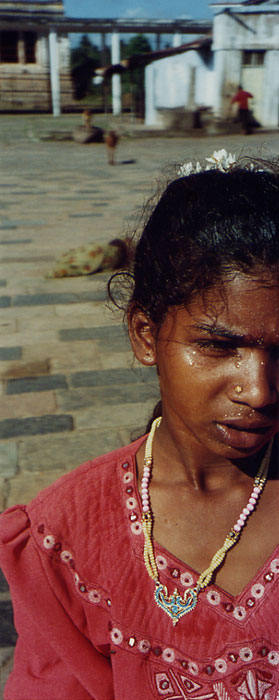 Untouchables are born into an unalterable social status, allowed only to mix and marry with those from their own caste and to perform only lowly jobs and tasks befitting their “station” in life. This belief system decrees that acceptance of these restrictions and living a virtuous life may lead to an individual moving up the caste system in their next incarnation. Whilst laws made have since made discrimination against the untouchables illegal, it still prevails and remains painfully evident in India, Nepal, Sri Lanka, Bangladesh and Pakistan to this day.
Untouchables are born into an unalterable social status, allowed only to mix and marry with those from their own caste and to perform only lowly jobs and tasks befitting their “station” in life. This belief system decrees that acceptance of these restrictions and living a virtuous life may lead to an individual moving up the caste system in their next incarnation. Whilst laws made have since made discrimination against the untouchables illegal, it still prevails and remains painfully evident in India, Nepal, Sri Lanka, Bangladesh and Pakistan to this day.
Particularly in the rural areas of India, where the majority of the poor population live, untouchables are banned from temples and higher caste homes. They perform jobs such as cleaning latrines and sewers by hand, or are bonded workers, many repaying debts incurred generations ago. Figures published only fifteen years ago saw 15 million children working in slave-like conditions for less than a dollar a day.
In 2001, Amnesty International reported on an “extremely high” number of sexual assaults on Dalit women, often the victims of landlords, upper-caste villagers, and police officers. Only 5% of the attacks were reported, and 30% of the rape complaints were dismissed by the police as false.
Thousands of pre-teen Dalit girls are forced into prostitution. Named devadasis, which translates to “female servant of god”, they are “married” to a deity or a temple, where they are forced to have sex with upper-caste community members until they are finally sold to urban brothels.
In 2013, national crime statistics indicated an average of over 1,000 rape cases against Dalit women are reported annually, the highest of any social group. Bear in mind the majority of crimes will go unreported, and murders of rape victims often go unpunished.
Ω

